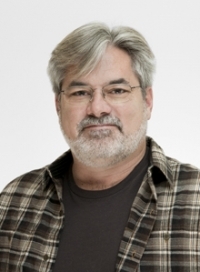First, a seeming digression from the subject of chronic illness.
In my youth, I worked as an aquarium diver for Marine World Africa USA in Redwood City, California. Five days a week, I would swim down into the tanks full of wildlife, spending time with sharks, dolphins, eels, seals and other creatures of the sea.
The most beautiful tank was a million-gallon tropical fish display, with giant groupers big as cars and tiny cleaner fish that swam in and out of their mouths, and angelfish, surgeonfish, damselfish, wrasses, and more in this man-made reef.
But then one day, the fish began to die. One by one I carried them out, these fish I knew as individuals. Their colors faded, and they died. After three weeks, the tank was almost empty. We turned off the heaters and changed to a cold sea collection of local fish.
We never knew what killed that underwater neighborhood. But what if there had been one single solution, to save the lives of many?
There was. And in later years, I saw it happen.
Hold that thought.
Now. Consider neurodegenerative (nerve-destroying) diseases, such as Parkinson's, Huntington's, Alzheimer's and ALS (Lou Gehrig's disease). All incurable.
What if they had a common weakness: might a single medication defeat them all?
If you go to the California stem cell agency web page, www.cirm.ca.gov, and look up the project of Steven Finkbeiner of the Gladstone Institutes, you will find an amazing possibility.
First, the problem.
"A major medical problem... is the growing population of individuals with neurodegenerative diseases, including Parkinson's and Huntington's...These diseases affect millions of people, sometimes during the prime of their lives, and lead to total incapacitation and...death."
Millions of people, incurably ill, with no expectation but suffering and death? That is about as grim as you can get!
But in the next sentence of his grant proposal:
"We propose to conduct...studies to understand the basic common disease mechanisms of neurodegenerative disorders... to develop effective treatments for these diseases..."
"common disease mechanisms... develop effective treatments..."
I called up Dr. Finkbeiner at the Gladstone Institutes and found that the idea of hunting for similarities was a deeply held conviction. He called it "Identifying common threads", and shared an unpublished article, which asked:
"What if we could find shared pathways that trigger neurological diseases...couldn't we make a difference?"
Finkbeiner proposes a stem cell technique to find those commonalities.
He would take skin cells from sick people and turn them into the kind of nerve cell the diseases attack. He would start with Parkinson's and Huntington's, and make a cellular model of the affected cell--(striatal for Huntington's, dopaminergic for Parkinson's) and then try a bunch of drugs on them.
If a drug was found that affected both diseases, it might be easy to put it into public use. If it was already approved by the FDA, they could skip the long years of testing and development--saving hundreds of millions of dollars--and potentially making the therapy more affordable.
"The goal of our study is to identify common mechanisms that cause the degeneration of neurons and lead to most neurodegenerative disorders...we have made good progress in both developing...novel compounds and identifying potential genetic targets that could lead to... therapeutic strategies for patients with Huntington's and Parkinson's disease".
One medication to defeat both Huntington's and Parkinson's and maybe other conditions like ALS (Lou Gehrig's disease), Alzheimer's and more?
Could that be possible?
Back to the fish tank.
Having seen the horrors of a mass fish kill once, I was naturally not anxious to witness it again, and became worried when I saw a kelp bass flopping on the bottom of the tank, thrashing around in what was surely pain.
I knew that fish. It had a growth in its throat. When I tried to feed it, it flexed its gill covers to suck the food in--but the blockage would not let the bit of cut-up herring pass. It thumped its head against the floor.
And then, the cure the ocean has for all disease swirled in.
A shark.
The brown and black-spotted sevengill circled, touching the bass, as if by accident. When it did not dart away, as a healthy fish would have done, the shark picked it up, and tapped its teeth on the fish's back. Anything? But the protective spines did not stand up. The kelp bass actually seemed to relax, as if glad its suffering was over. One abrupt shake of the shark's head, and the fish was two and food.
The disease (if disease it was) had not been allowed to spread. In nature's elegant simplicity, the shark did not catch the illness.
Why not? Is there some super-strong immunity gene that protects the shark? I have no idea.
And might there be a gene or medication that could block the progression of neurological disease among suffering people?
The California stem cell agency wants to find out.
The answer could benefit millions.
Don C. Reed is the author of the forthcoming book, STEM CELL BATTLES: Proposition 71 and Beyond: How Ordinary People Can Fight Back Against the Crushing Burden of Chronic Disease.
http://www.worldscientific.com/worldscibooks/10.1142/9255.html.


